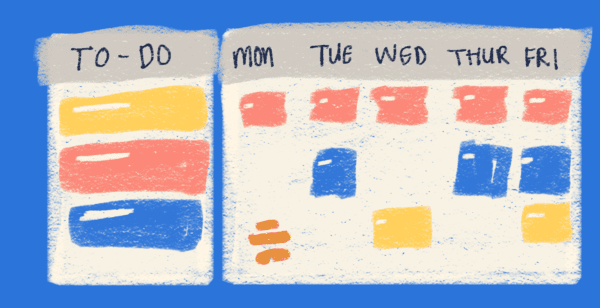You look at your to-do list, and it almost feels like it’s staring back at you – where do you start? And how long will it all take? Luckily, there’s a new task management method that will turn unmanageable assignments into organized, routinized actions: timeboxing.
What is timeboxing?
Timeboxing is scheduling a block of time into your calendar to spend on a future task. For instance, your 9 A.M. to 10 A.M. hours would be blocked off for a meeting, and your 10 A.M. to 11 A.M. hours would be booked with the label “writing and submitting a change request.” Each of your timeboxes will be color-coded, and those colors will correspond with various projects on your docket. And just as your teammates would be able to see your activity in your calendar, they’d be able to know what you’re working on and when (or if you’re not sharing your activity, they’d know you were busy).
Rather than starting a task and continuing until it’s complete, timeboxing takes a more proactive approach and allows you to determine the amount of time you’re spending on a given activity. Timeboxing requires picking a fixed amount of time to finish something rather than leaving things open-ended, much like booking a meeting with yourself. It’ll even show up in your calendar labeled with the task you’re completing, so teammates and managers can see what you’re up to.
How does it work?
Timeboxing works because it allows you to position and align your work with precise goals. Rather than constantly cross-checking your Jira boards and your to-do list, you’ll be able to see exactly when things are due and the amount of time you have in the week to get them done.
This technique ensures that your schedule is like a chain of dominos. With every timebox you complete, you create a linear progression from tasks to deadlines that you can see every time you open your calendar. It clarifies where you’ve been, how you got there, and how far you have to go so you can feel better about your work performance and track the progress of assignments with detail-oriented diligence.
The efficacy of timeboxing
Timeboxing isn’t just a fun trend – it’s a guaranteed way to improve your flow. A Filtered study of the 100 best productivity hacks ranked timeboxing as the best by far.
First, timeboxing increases your collaboration and communication by allowing your teammates to literally see your daily activities for themselves. This visual element eliminates so many status updates, as they’re able to see when you’re working on something that they might need.
Additionally, it’s important to keep in mind Parkinson’s law, which states that a task will take up the amount of time you allot for it. That means if you’re not giving yourself a timeline, even the shortest action item could take up hours.
Your guide to timeboxing
If you’re interested in trying out timeboxing, but don’t know where to start, read on for some helpful tips.
1. Make your to-do list into a calendar
Transitioning to timeboxes doesn’t need to be an unnecessarily complicated process. In a way, you’re just transposing your to-do list onto a calendar format. Take a look at your to-do list as it is, and find a place to plug in every item. If you’re having trouble prioritizing, you can also use the 4Ds of time management to determine what to plug in where.
2. Treat your time like anyone else’s
Once you create a timebox, act like you’re in a meeting with yourself. That means no rescheduling unless there’s an emergency; show up on time, and give it your all. If you wouldn’t have your phone out during a meeting with your manager, don’t have it out in your timebox. Also, if you do have to reschedule, don’t use it as an excuse to procrastinate. After all, you wouldn’t be hesitant to find a time if you were being considerate to someone else.
3. Don’t over or underestimate yourself
Know your limits. Don’t schedule a fifteen-minute activity for a two-hour timebox, and don’t give yourself half an hour for a task that could take half the day. If you don’t finish your task in the allotted time, create another timebox immediately after it ends to ensure that the task will get done as swiftly as possible.
4. Constantly seek improvement
One of the most important ways to make timeboxing successful is to make sure you’re evaluating your time management skills as you go. Tools like time trackers can determine what you’re spending too much time on and how to go about streamlining those processes. Otherwise, you may just be caught in a cycle of timeboxing in a way that doesn’t maximize your time or cater to your own personal productivity style.
5. Check in every once and a while
It’s a triumphant feeling to look back on what you’ve done with pride, and timeboxing allows for just that. By being able to see your accomplishments on your calendar, you’re giving yourself more reasons to celebrate your hard work and show off your time management skills. You can also use it to take stock of your mistakes, especially if you have a task that you underestimated or had to create additional timeboxes for.
Timeboxing is a process with a learning curve, and you shouldn’t expect to be perfect at it within the first few weeks. You’ll have to get to know your workflow in a way that you may have never thought possible and be diligent about assessing your performance. And if you’re sharing your calendar with teammates, it could be a new feeling to be so open with others about your daily work life. However, timeboxing is a valuable skill that can dramatically cut down to-do lists and make your workdays feel a little more structured.
